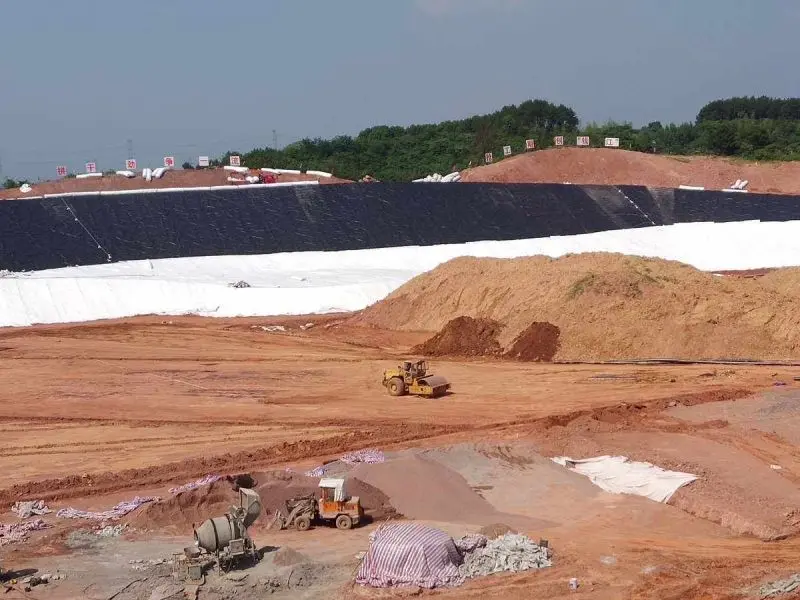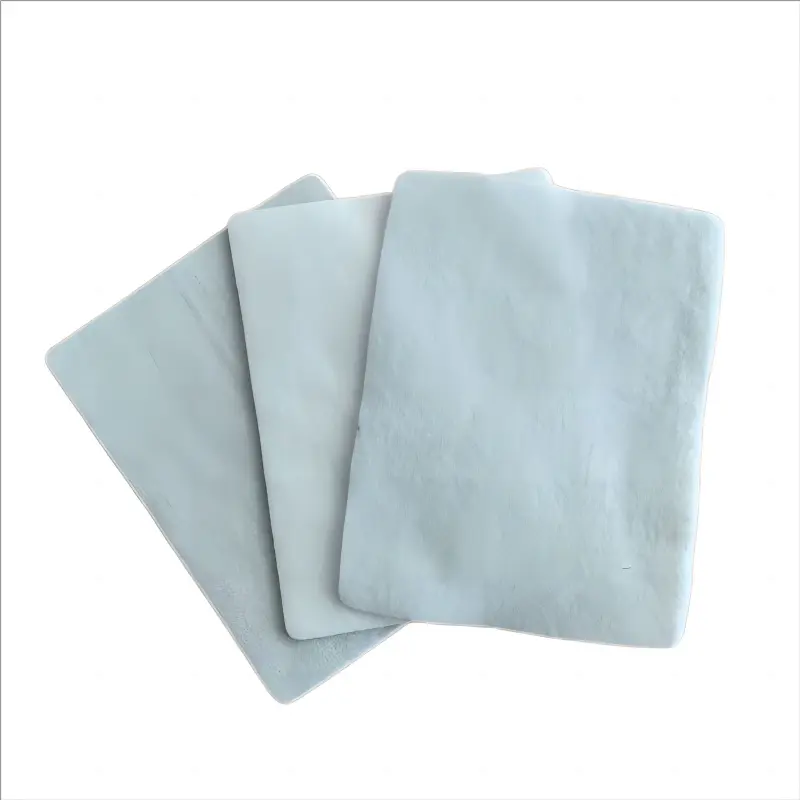These fabrics play a vital role in soil stabilization, filtration, separation, drainage, and erosion control. One important aspect of geotextile fabric is its thickness, which can impact its performance and suitability for specific applications.
Geotextiles are primarily classified into non-woven and woven types, each with varying thicknesses and applications. Understanding the thickness and its implications for these two types will help in selecting the right fabric for the right project.
999186.webp)
What is Geotextile Fabric Thickness?
Geotextile fabric thickness refers to the measurement of how thick the fabric is. Typically measured in millimeters (mm), thickness is one of the specifications that help determine a fabric’s strength, permeability, puncture resistance, and durability. Thickness directly impacts the geotextile's capacity to handle different types of loads and environmental conditions.
The thickness of geotextile fabric can vary significantly based on its type:
Non-Woven Geotextiles: Usually range from 0.5 mm to over 5 mm.
Woven Geotextiles: Generally thinner, with typical thicknesses ranging from 0.2 mm to 3 mm, depending on the weave density and material used.
Non-Woven Geotextile Fabric Thickness and Applications
Non-woven geotextiles are made by bonding or entangling synthetic fibers using heat, needle punching, or chemical processes. The resulting fabric is typically thicker and more flexible than woven geotextiles, making it ideal for applications requiring high filtration, drainage, and cushioning.
Thickness Range
Lightweight Non-Woven (0.5 - 1.5 mm): These fabrics are relatively thin, with limited puncture resistance but good filtration and drainage capabilities.
Medium-Weight Non-Woven (1.5 - 3 mm): Offers a balance between filtration, drainage, and durability, suitable for many standard applications.
Heavy-Duty Non-Woven (3 - 5 mm and above): Provides excellent puncture resistance and durability, ideal for high-stress applications.
Applications by Thickness
Thin Non-Woven Geotextiles (0.5 - 1.5 mm)
Drainage and Filtration: Thin non-woven geotextiles allow water to pass through while preventing soil particles from moving, making them ideal for drainage layers, road subgrades, and erosion control in low-stress environments.
Garden and Landscape Projects: They can be used as landscape fabric to prevent weeds and separate soil layers, improving drainage in gardens.
Medium Non-Woven Geotextiles (1.5 - 3 mm)
Soil Stabilization: Medium-thickness non-woven geotextiles provide adequate strength and filtration, making them suitable for stabilizing soil in retaining walls and embankments.
Road Construction: They are often used in road construction projects for subgrade stabilization, as they help separate and reinforce different soil layers and control erosion.
Underground Drainage Systems: The fabric’s moderate thickness offers a good balance between filtration and durability, preventing clogging in drainage pipes and channels.
Thick Non-Woven Geotextiles (3 - 5 mm and above)
Landfill Liners and Caps: Thick non-woven geotextiles provide extra protection as liners or caps in landfill sites, enhancing stability and preventing soil contamination.
Heavy-Duty Applications: Used in railway construction, high-load roads, and airports where extra strength and puncture resistance are essential to support heavy loads and prevent soil mixing.
Erosion Control: In high-stress erosion control applications, thicker geotextiles prevent soil erosion and provide stability on steep slopes or around waterways.

Woven Geotextile Fabric Thickness and Applications
Woven geotextiles are produced by weaving synthetic fibers in a crisscross pattern, creating a fabric that is typically thinner but more durable in terms of tensile strength. Woven geotextiles are known for their strength and stability, making them ideal for applications where soil separation and reinforcement are crucial.
Thickness Range
Lightweight Woven (0.2 - 1 mm): Thin but strong, primarily used for soil separation and light reinforcement.
Medium-Weight Woven (1 - 2 mm): Provides moderate strength, suitable for most construction projects that need soil stabilization and erosion control.
Heavy-Duty Woven (2 - 3 mm and above): Thick and very strong, designed for heavy-duty reinforcement in high-stress areas.
Applications by Thickness
Thin Woven Geotextiles (0.2 - 1 mm)
Soil Separation: Thin woven geotextiles are commonly used for soil separation, especially in projects where layers of soil or sand need to be kept distinct, such as in landscaping and construction.
Basic Erosion Control: For light erosion control tasks, thin woven geotextiles provide sufficient strength to hold soil in place, preventing erosion on gentle slopes.
Medium Woven Geotextiles (1 - 2 mm)
Road Base Stabilization: Medium-thickness woven geotextiles are often used in road construction to stabilize the base, separating soil from aggregate layers and providing reinforcement.
Retaining Wall Support: They can be used behind retaining walls to provide stability and prevent soil migration, ensuring the wall remains stable over time.
Drainage Systems: In drainage applications, woven geotextiles allow water to pass through while preventing soil from clogging the drainage system.
Thick Woven Geotextiles (2 - 3 mm and above)
Heavy-Duty Soil Reinforcement: Thick woven geotextiles are ideal for heavy-duty applications, such as supporting railways, airports, or heavy-loaded roads, where high tensile strength is required.
Slope Stabilization: For steep slopes prone to erosion, thick woven geotextiles provide the necessary reinforcement to stabilize the soil and prevent landslides.
Subgrade Reinforcement in Industrial Areas: In industrial areas where heavy machinery is used, thick woven geotextiles reinforce the subgrade, preventing soil displacement and prolonging the lifespan of the surface.
495255.webp)
How to Choose the Right Geotextile Thickness for Your Project
Choosing the correct thickness for a geotextile fabric depends on the specific application and environmental conditions. Here’s a guide to help you select the right thickness:
Consider the Type of Load:
For light loads, such as gardens or landscapes, thin geotextiles (0.5 - 1 mm for non-woven, 0.2 - 1 mm for woven) are generally sufficient.
For moderate loads, such as road construction and retaining walls, a medium thickness (1.5 - 3 mm for non-woven, 1 - 2 mm for woven) is appropriate.
For heavy loads, such as railway tracks or industrial areas, thicker geotextiles (3 mm and above for both non-woven and woven) offer better durability and support.
Environmental Exposure:
In wet environments where drainage is a priority, non-woven geotextiles with medium to high thickness are recommended.
For dry, high-stress applications like heavy traffic areas, woven geotextiles with high tensile strength and medium to high thickness are suitable.
Erosion and Soil Conditions:
For steep slopes and areas prone to erosion, thicker non-woven or woven geotextiles provide the necessary reinforcement to hold the soil in place.
For sandy or unstable soil, medium to thick non-woven geotextiles work well for separation and filtration.
Long-Term Durability:
If durability is a priority, opt for thicker woven geotextiles with higher tensile strength for long-lasting support.
Non-woven geotextiles with higher thickness are preferred for applications that require long-term filtration and soil stabilization.
Conclusion
The thickness of geotextile fabric plays a critical role in its performance, durability, and suitability for specific applications. Non-woven geotextiles, with their thicker profile and flexibility, are excellent for drainage, filtration, and erosion control, especially in areas where soil stabilization is needed. Woven geotextiles, generally thinner but stronger, are better suited for reinforcement and soil separation in high-stress environments.
By carefully assessing the thickness requirements based on the project type, load, environmental conditions, and soil characteristics, you can choose the right geotextile fabric that will meet your project’s demands and ensure long-lasting results.
![]() 300g PET geotextiles test report.pdf
300g PET geotextiles test report.pdf

897.webp)
942.webp)
237.webp)